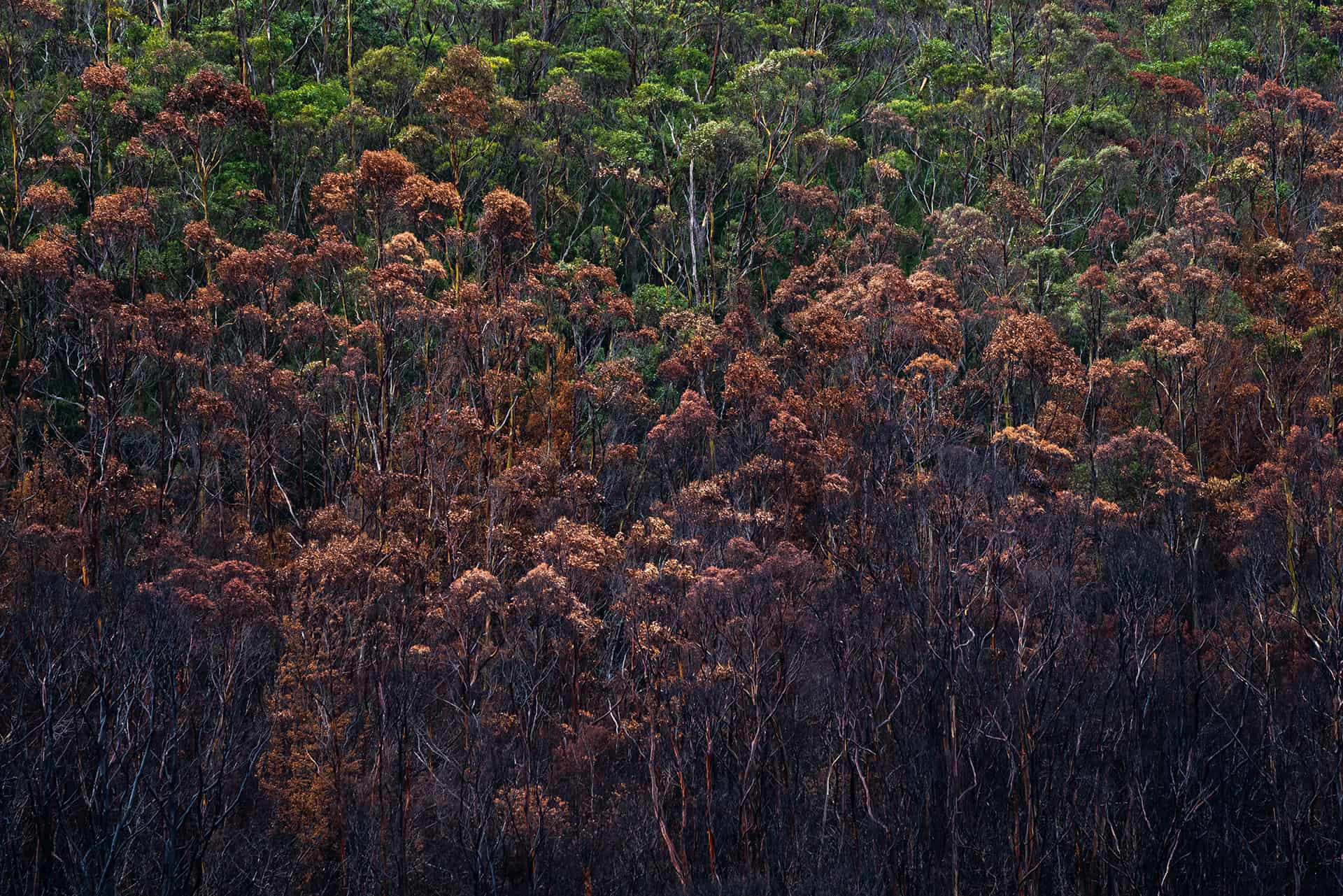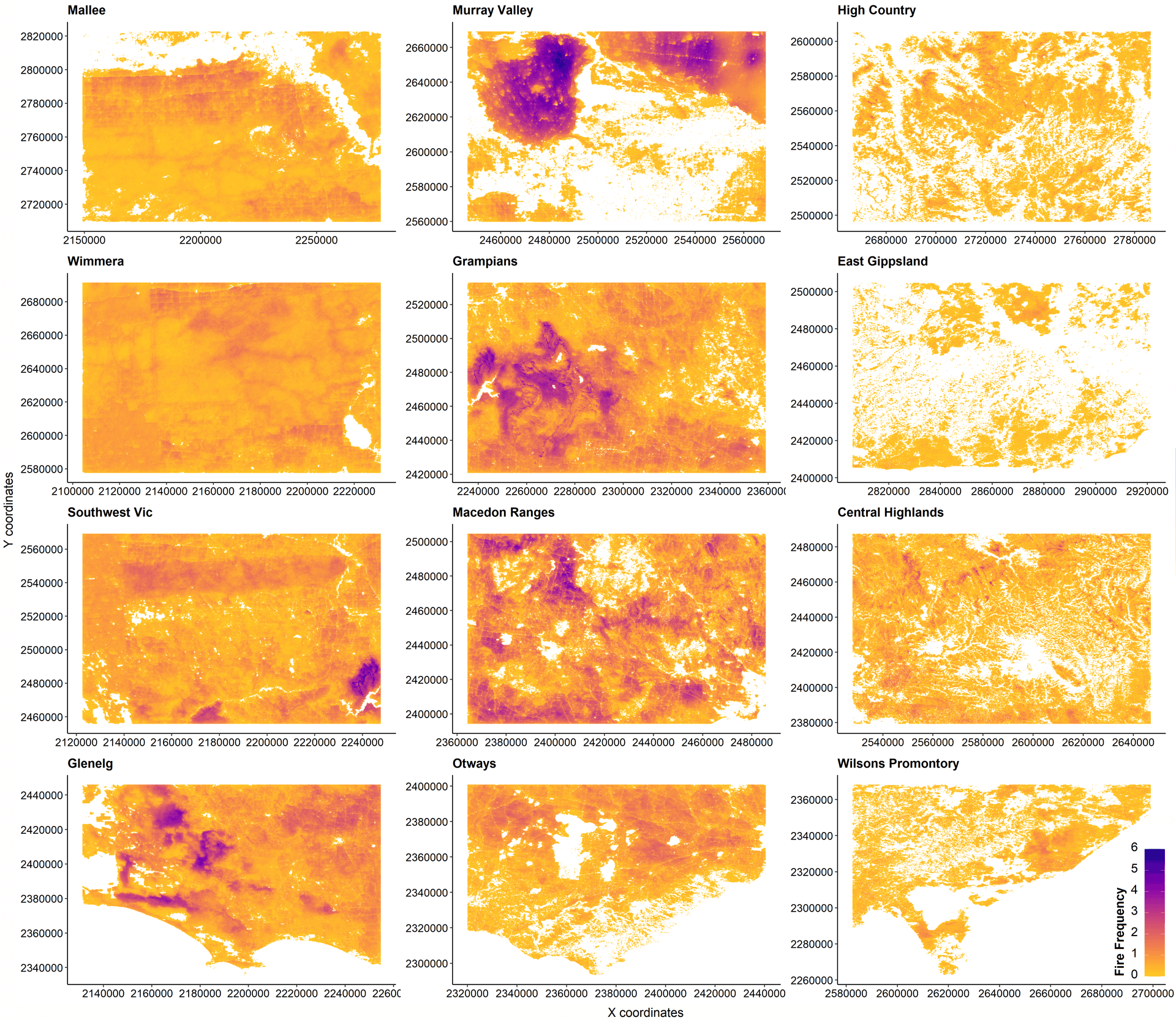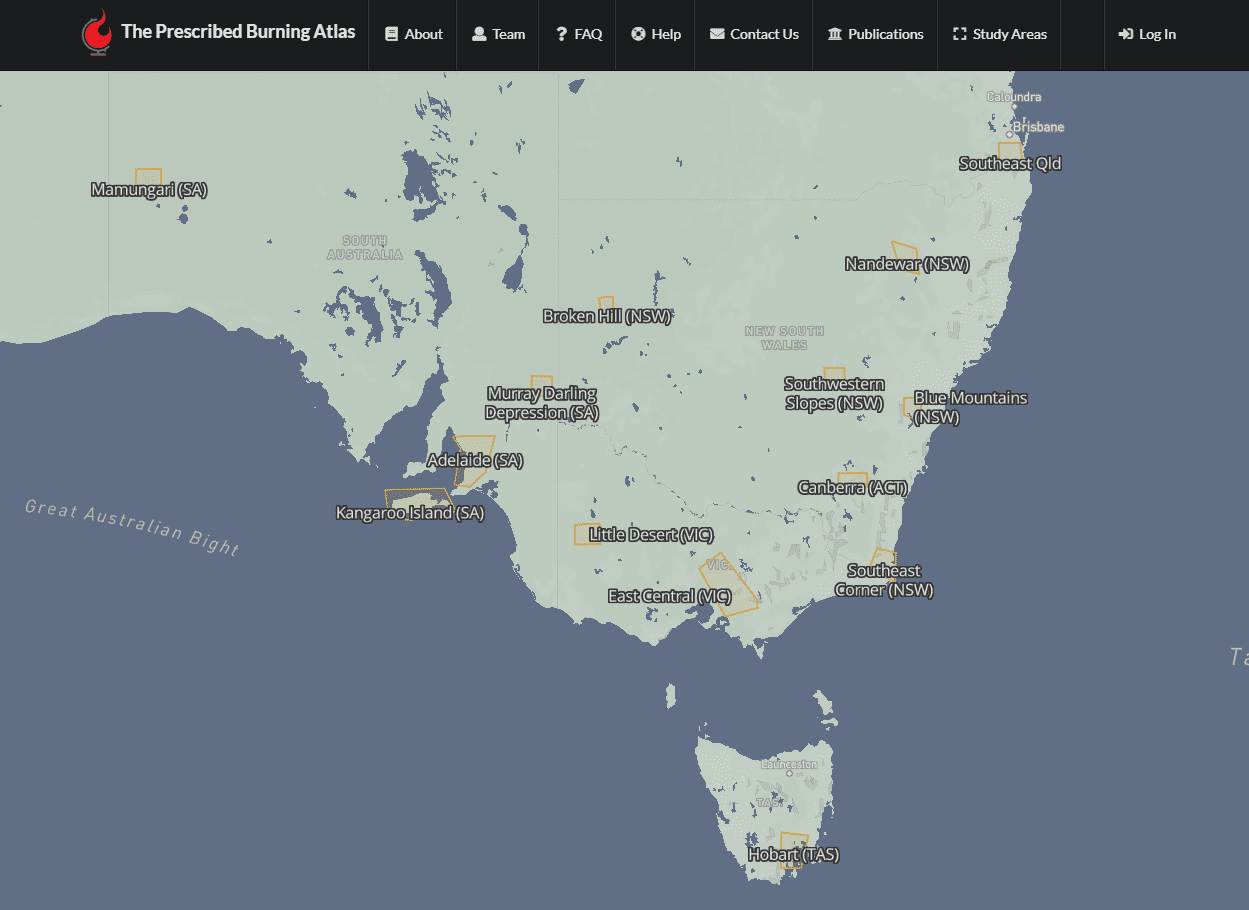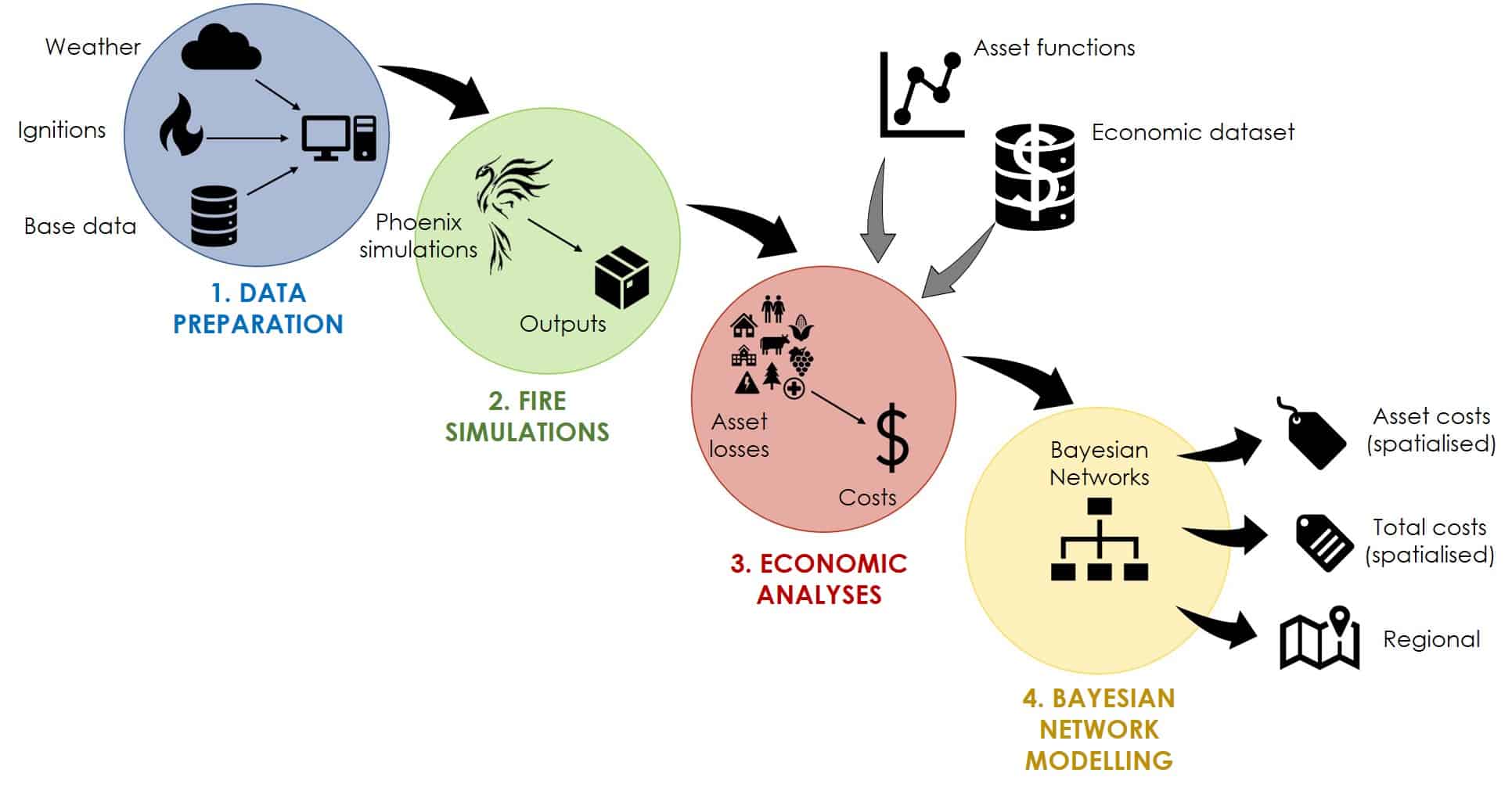Case Studies and Current Research
Our case studies, current work in progress and scientific publications are based on in-depth investigations of the underlying principles of fire and their regimes
Case studies

Future fire regimes increase risks to obligate-seeder forests
Many species are adapted to a particular fire regime and major deviations from that regime may lead to localised extinction. Here, we quantify immaturity risks to an obligate-seeder forest tree using an objectively designed climate model ...

Development of state-wide future fire risk estimates
Understanding how fire regimes are shifting with climate change and therefore how bushfire risks are changing is a key knowledge gap for many management jurisdictions in Australia, including biodiversity management. Preserving species and ...

The Prescribed Burning Atlas: a new system to plan effective prescribed burns
Planned or prescribed burning is widespread in forests and grasslands across Australia. The primary aims of these programs are for:
hazard or fuel reduction: prescribed burning is used to reduce the amount of fuel in order to reduce the ...

Quantifying catastrophic bushfire consequences for energy network providers
Electricity networks face a number of competing challenges, including the regulatory requirement to deliver a reliable, modernised system that can operate under a changing climate. It is therefore important that energy providers consider the ...
Our Publications
FLARE is dedicated to advancing our understanding of wildfire for the benefit of the community and the environment. Our team contributes to the global knowledge of fire through scientific publications, conferences and professional and educational activities.
Projects we are currently working on
Optimizing bushfire management in the Upper Yarra Water Supply Catchments
The forested catchments of the Upper Yarra Water reservoir are a vital part of Melbourne’s water supply. However, large-scale high-severity bushfires are a natural occurrence in these forests and bushfire risk is a key consideration for ...
Future fire regimes and their impact on mammal populations
Fire drives patterns in mammal biodiversity across the globe. However, due to climate change fire regimes are shifting and this impacts species and their populations. It is important we gain a better understanding of how species are affected ...
Future fire regimes in the Pyrocene
Large and severe wildfires impact people and places globally, and recent examples of extensive wildfires around the world – from Southeastern Australia, Western USA, Greece, Portugal, Canada, and, unexpectedly, in the historically cool ...
Evaluation of terrestrial laser scanning technology for the assessment of fuel hazard metrics
Fue hazard data are collected in the field for a range of purposes including rapid fuel evaluations during bushfires, assessing the effectiveness of fuel management, and developing and refining fire behaviour models. This research aims to ...
Understanding the origin and development of extreme and mega bushfires
Extreme and mega fires result in significant damage to property and infrastructure and are associated with large suppression costs. These events occur when separate fires merge. Their increase occurrence in recent seasons highlight the ...
Multiscale experimentation and simulation of wildfire spotting
Wildfires pose a significant risk to human and environmental assets around the world, especially in the Mediterranean region and Australia. Firebrands generated in wildfires are one of the most dangerous exposure mechanisms and the main cause ...